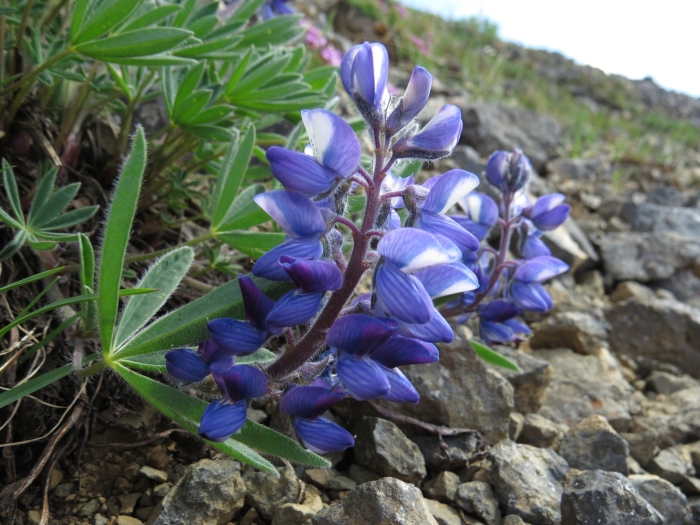Arctic Lupine
(Lupinus arcticus)
Arctic Lupine (Lupinus arcticus)
/
/

© Jack Bindernagel
CC BY 4.0
Image By:
© Jack Bindernagel
Recorded By:
Copyright:
CC BY 4.0
Copyright Notice:
Photo by: © Jack Bindernagel | License Type: CC BY 4.0 | License URL: http://creativecommons.org/licenses/by/4.0/ | Uploader: jbindernagel | Publisher: iNaturalist |























Estimated Native Range
Summary
Lupinus arcticus, commonly known as Arctic lupine or subalpine lupine, is a perennial herb that is native to northwestern North America, including regions from Oregon to Alaska and eastward to Nunavut. It typically grows up to 20 inches tall and features palmately compound leaves that are dark green and hairy. The plant produces showy spikes of blue, purple, or white flowers in the late spring to early summer, which are highly attractive to pollinators such as bees. Arctic lupine is adapted to a variety of habitats, including alpine meadows, open tundra, and the hills of the Canadian Arctic Archipelago, where it contributes to the nitrogen cycle through its symbiotic relationship with soil bacteria.
Arctic lupine is valued for its ornamental flowers and ability to thrive in cool, moist climates. It is often used in wildflower gardens, rock gardens, and for naturalizing in suitable climates. It prefers well-drained soils with moderate moisture and can tolerate partial shade, although it flourishes in full sun. While it is generally low-maintenance, it can be susceptible to fungal diseases in wet conditions. Gardeners should be aware of its neurotoxic compound, sparteine, which can be harmful if ingested by humans or animals. Despite this, the plant’s presence can benefit ecosystems by deterring certain herbivores and improving soil fertility.CC BY-SA 4.0
Arctic lupine is valued for its ornamental flowers and ability to thrive in cool, moist climates. It is often used in wildflower gardens, rock gardens, and for naturalizing in suitable climates. It prefers well-drained soils with moderate moisture and can tolerate partial shade, although it flourishes in full sun. While it is generally low-maintenance, it can be susceptible to fungal diseases in wet conditions. Gardeners should be aware of its neurotoxic compound, sparteine, which can be harmful if ingested by humans or animals. Despite this, the plant’s presence can benefit ecosystems by deterring certain herbivores and improving soil fertility.CC BY-SA 4.0
Plant Description
- Plant Type: Herb
- Height: 1-3 feet
- Width: 1-2 feet
- Growth Rate: Slow, Moderate
- Flower Color: Blue, Pink, Purple, White
- Flowering Season: Spring, Summer
- Leaf Retention: Deciduous
Growth Requirements
- Sun: Full Sun, Part Shade
- Water: Medium
- Drainage: Fast, Medium
Common Uses
Bee Garden, Butterfly Garden, Low Maintenance
Natural Habitat
Native to alpine meadows, open tundra, and the hills of the Canadian Arctic Archipelago
Other Names
Common Names: Subalpine Lupine
Scientific Names: , Lupinus arcticus, Lupinus arcticus var. arcticus, Lupinus polyphyllus subsp. arcticus, Lupinus polyphyllus subsp. arcticus, Lupinus relictus,
GBIF Accepted Name: